Wanted: the perfect media
People have been trying to start seeds in weird stuff for a long time. From gravel to packing peanuts, just about everything has been tried.
The great thing about seeds is that they come pre-packaged in a neat shell with all the nutrients they need to germinate and thrive for the first few weeks of their lives.
This means that the requirements of a seeding material are few. Most seeds require only three things from their media:
- consistent moisture (but not wetness)
- aeration (oxygen throughout the media)
- lack of disease (not recycled from diseased crops)
(Of course, seedlings also require light and warmth, but these aren’t connected to the type of media.)
With these three things, almost anything will do for seedlings—but this doesn’t mean that anything will do for you. Different types of systems and the personal preference of farm managers will determine other characteristics of the seedling media you choose.
For example, you’ll need a media heavy enough to provide stability, but light enough to handle and move. You may care deeply about using sustainable materials, so you want something you can either recycle or reuse. These farmer-specific goals will whittle down your media options.
Recently, flexible or polymer-bound plugs have risen in popularity, especially for systems with recirculating irrigation (like hydroponic systems) and limited space. There are several nice qualities that bring them to the top of the list.
Read more: What to look for in a growing medium
Pro: clean and neat
Polymer-bound plugs incorporate an organic material like peat or coco coir and bind it together with a polymer—picture a rubbery glue. This makes the plug very contained.
Unlike a soil, plain peat, or plugs made of loose media, little bits of material will not break off and clog up irrigation.
Pro: Easy to handle
Polymer-bound plugs are separate from each other, and one piece. This means you won’t have to cut or tear plugs apart, avoiding root damage and saving time.
Handling polymer bound plugs won’t create dense portions in the root zone either, which happens with some media types and causes damage and anaerobic zones.
*This does not mean that you should be handling seedlings a lot! The less they are handled, the fewer disease opportunities there are!
Pro: convenience
Another trait desired by many growers in tightly spaced systems with a need for labor efficiency is that polymer bound plugs can be extremely convenient. Many are shipped already in the seedling tray, and already damp; growers simply pull the tray from the package, adds seeds, and place it into their seedling system.
(Read about how to build a space-efficient seedling system here.)
This saves time sorting plugs (or loose media), filling trays and wetting the material.
Pro: faster germination
Compared to some other types of media, polymer-bound plugs have shown faster germination.
Even a few days can speed up your growing cycle. If you save 2–3 days every turn, you can fit in one extra harvest a year; that translates into more revenue! This could very well make polymer plugs worth the investment, depending on what your current seedling operation is.
Con: hard to reuse
Polymer-bound plugs can’t be reused in the typical sense. Once seeds grow in a plug and are transplanted into the maturing system, roots tend to take over. By the time you harvest the crop and take the root ball out of the system, the plug is too overgrown or torn apart by roots to be reusable.
Growers can reuse plugs in which the seed did not germinate, but this can open doors for disease and is more labor intensive. The final option is composting. Polymer-bound plugs will decompose and compost over time, but it takes 3–4 years for them to break down.
Balancing benefits with cost
Of course, an important factor in choosing the substrate is weighing the benefits gained against the cost. In a comparison between polymer plugs and soil plugs for a small grower, for example, polymer plugs will come in second for initial and recurring costs.
Something that growers must calculate into that is how long it takes them to plant each tray of plugs. If it takes growers 2 minutes longer to plant a tray with soil, that might make up the price distance between the two types.
So which is better?
We’ve used polymer-bound plugs, soil, rockwool, peat, oasis, and more. None is universally best, and growers have many options. But polymer bound plugs are the best for growers who want to run a clean hydroponic system and reduce labor time.
Read more: Tips on choosing a substrate
Want more info on hydroponic substrates?
There’s a whole course on substrates (media) and how to choose the best one for your system. Check it out here:

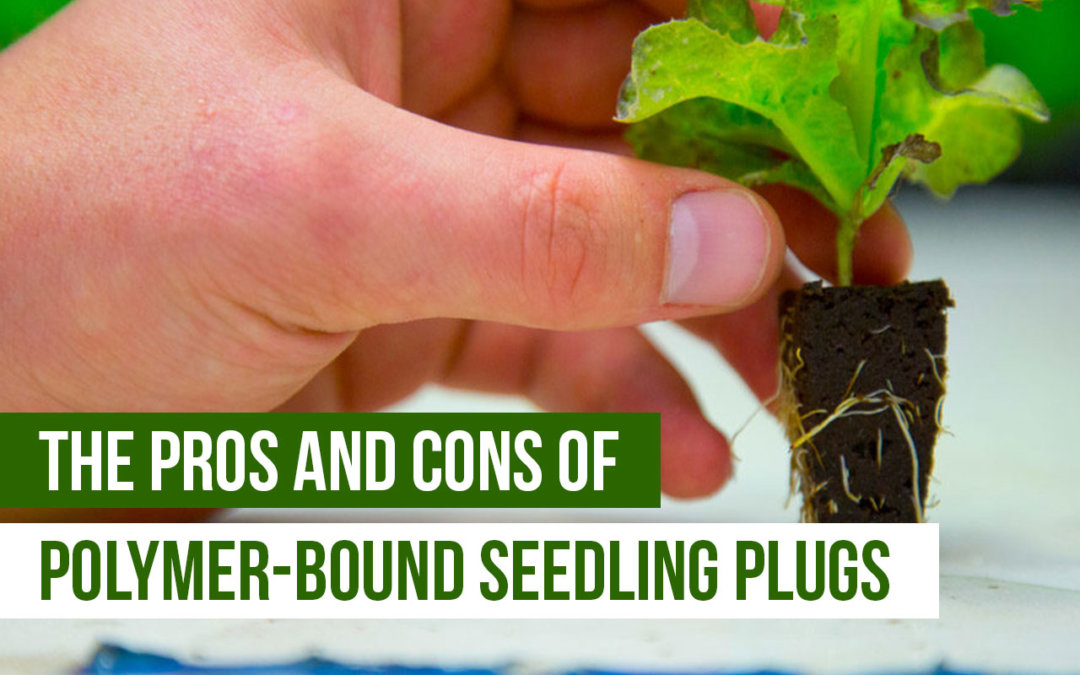
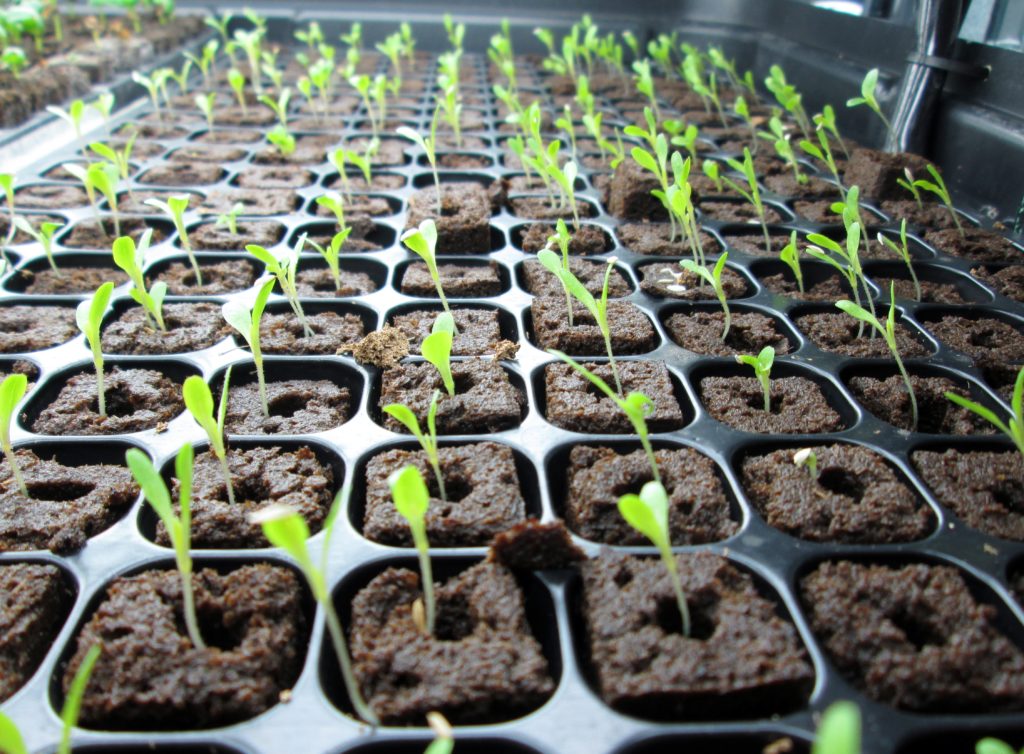
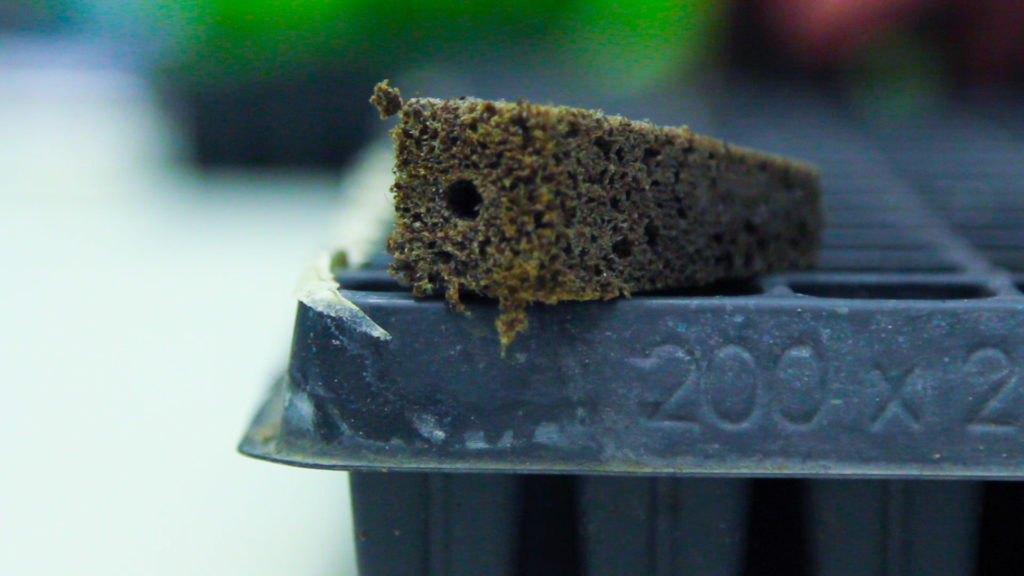

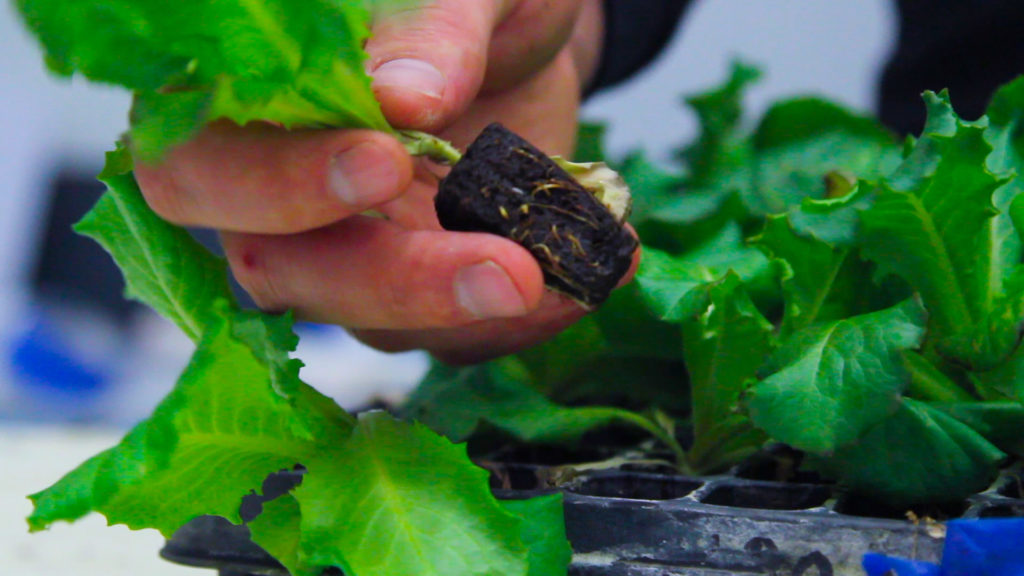
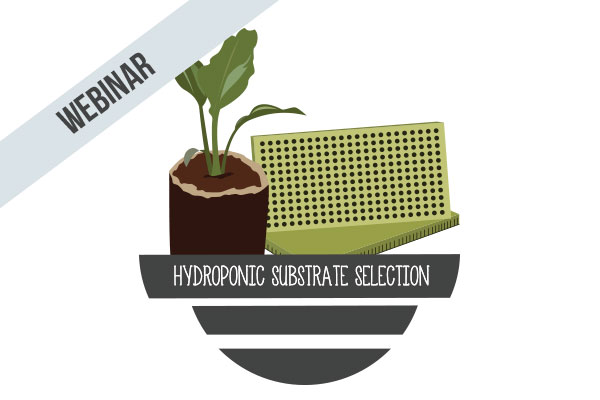

“But polymer bound plugs are the best for growers who want to run a clean hydroponic system and reduce labor time.”
Would this statement also hold true when cloning vs. seedlings?
Hi Green Thumb. Cloning can definitely be a great tool for growers! It does tend to be cleaner, and although labor time for propagating clones isn’t going to be much improved, cloning can really cut time off of the production cycle. Growers will have to weigh the pros and cons for each crop that they wish to clone, however. For example, Haydn Christensen down at Bayberry Fresh finds that cloning mint is insanely easy and fast. (He just drops a few cuttings into his drain line each time he harvests, then picks them back up when they’re ready. It doesn’t take any extra space or time.) Other crops are a bit harder or slower – for example, although you can clone something like cucumber, you might find that only 5 out of 10 root out. You’d have to weigh the success rate and time against what it would cost to grow some seedlings of the same crop. Great thought on cloning, though, and you should let us know what you end up doing! We’d love to know what crops you try out.
To answer your question – polymer bounds plugs are a very clean, low-labor option for growers who do require a plug for propagation.
Hi guys , i live in england , how do i buy this polymere glue so i can make the plugs myself, can’t buy readymade in uk, cheers
Can you recommend a place to source FlexiPlugs in smaller quantities (boxed/shipped by the hundreds not thousands)?
Thank you!
Hi Brittany, yep! We sell trays of 162 plugs for $6.50 here: https://shop.brightagrotech.com/flexitray-162-cell-seedling-tray/
Thanks Amy. My order of four trays arrived last week- do I need to use them within a certain time frame? I noticed they were slightly moist and would hate for them to go bad. Cheers.
Brittany, awesome! They are shipped moist because it’s difficult to wet them after they’ve dried out (kind of like peat moss or a sponge). If you keep them moist it will certainly make things easier for you!
Are these good to use in an Aquaponic system?
Yep! The only media you don’t want to use in aquaponics are perlite and rock wool.
Why not perlite in aquaponic systems. I have seen it used in aquarium filters.
Hi Joni, perlite dust can irritate fish by cutting their tender gills. We don’t recommend using perlite, as it will stress the fish.
Can polymer bounds plugs be used in organic farming?
Hi Joni, it depends on the brand you go with. Flexiplugs, shown in this video, are not OMRI certified, but others are.
what are the other plugs polymer bound with the organic approval?
Hi Justin, I beleive JiffyPot and Viagrow offer some. You could also try peat moss plugs.
I am wondering if Justin ever found certified organic plugs in smaller quantities (50 or so vs. 2,500). I have searched and searched and keep coming up empty. Any suggestions?
Which is the best size of flexiplug to use for starting leafy greens and herbs such as kale, lettuce, basil? I see options for 0.9″x2″ and 0.75″x1.5″ plugs and want to make sure there is enough medium without being wasteful. Would the plug size change for things like bok choy or pac choi?
Hi JP, we use the smaller size over here and it does just fine (even for bok choy or cabbage). In fact, a more petite plug is actually easier to plant in techniques like ZipGrow.
L.S,
We sowed a lot of annual flower seed for a famers cutting garden in these polymer plugs. The plugtrays are handled by a sowing machine, which makes holes in the plugs and then sows a seed in each hole.
After that we sprinkled a good amount of vermiculite over each tray.
Some seeds do very well, but much to our disappointment lots of seeds pushed themselves op and lie on top of the plug. They didn’t even made roots, just the bare seed lies on top.
I’m really wondering what causes this problem and how to solve it.
I’d really appreciate your reply,
Astrid
That’s the probblem with polymer plugs and the reason most growers choose rockwool plugs for germination and cloning in hydroponics/aquaponics! this usually happens if seeds can’t root in the polymer plugs because of their spongy structure – so it’s pushingig itself out. also for cloning they are not the best. it can be very difficult to push a clone into these plugs, also because of the spongy structure without bending or breaking the stem (bigger clones or wooden stems are no problem – but usually they arent). in rockwool thay get in easily and also give them better hold, you need to be able to lift the clone without the plug falling of!
i also prefer rockwool cubes after trying both for long time. polymere plugs are easier to handle but once your rockwool is soaked in ph regulated water (depending on your water you may give them nutes, how much depends on the plant) they are ready to use and superior over polymer plugs.
both are good options, if you cant get your rockwool plugs prepared correctly or if you are just lazy go with polymer!
I’ve been using Flexiplugs for a while now. I recently took over the position of our former horticulturalist. I’m having a hard time figuring out why our plugs keep getting a yellowish/white crystalline structured growth on the top of the plug that exposed to the air and light. Algae don’t seem to want to grow on the plugs that have this.
Hi Chris,
The build-up is caused by the nutrient solution evaporating and leaving mineral salts behind. This is fairly common in bottom-watered setups like ebb and flow.
Starting with peat, how could I make my own polymer plug?
Hi James, did you find out the way to make it your self? I am trying to find out the way to do it too. thanks!
I am trying to guys. Please share if you found something.
Hello Amy, we have a tray of 200 plugs. I am not sure about the dimensions. But If we provide you the dimensions will you be able to deliver the plugs in Vietnam. Can you tell me a generalized price for the plugs? Our plugs look exactly the same way as shown in the picture in clean
and neat section of this article.
How do I store my leftover plugs for next year?
Having never seen or used these plugs, I’m not clear about if they just germinate and grow in these plugs and then you just plant the plugs when you have enough growth?
Amazing post thanks for publishing